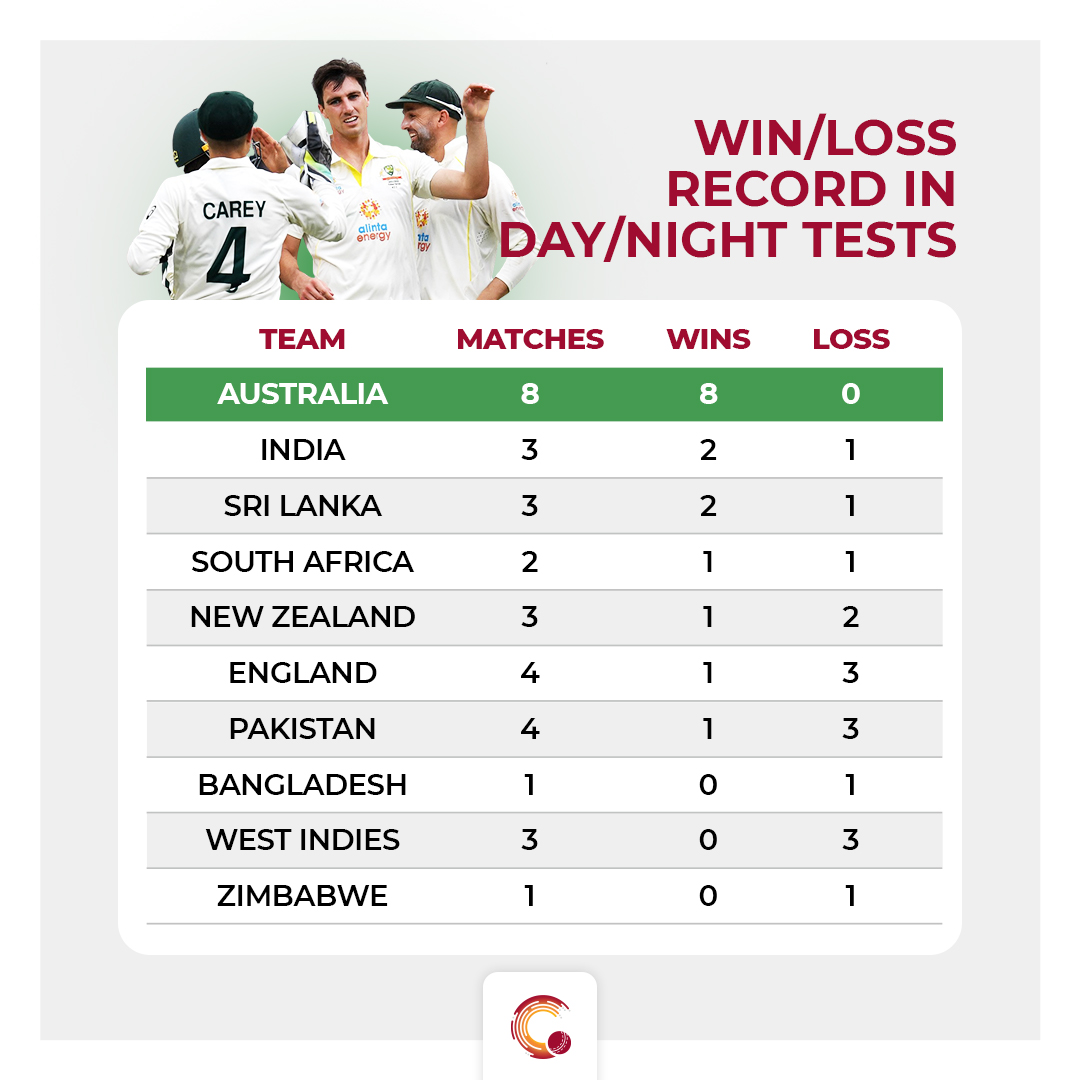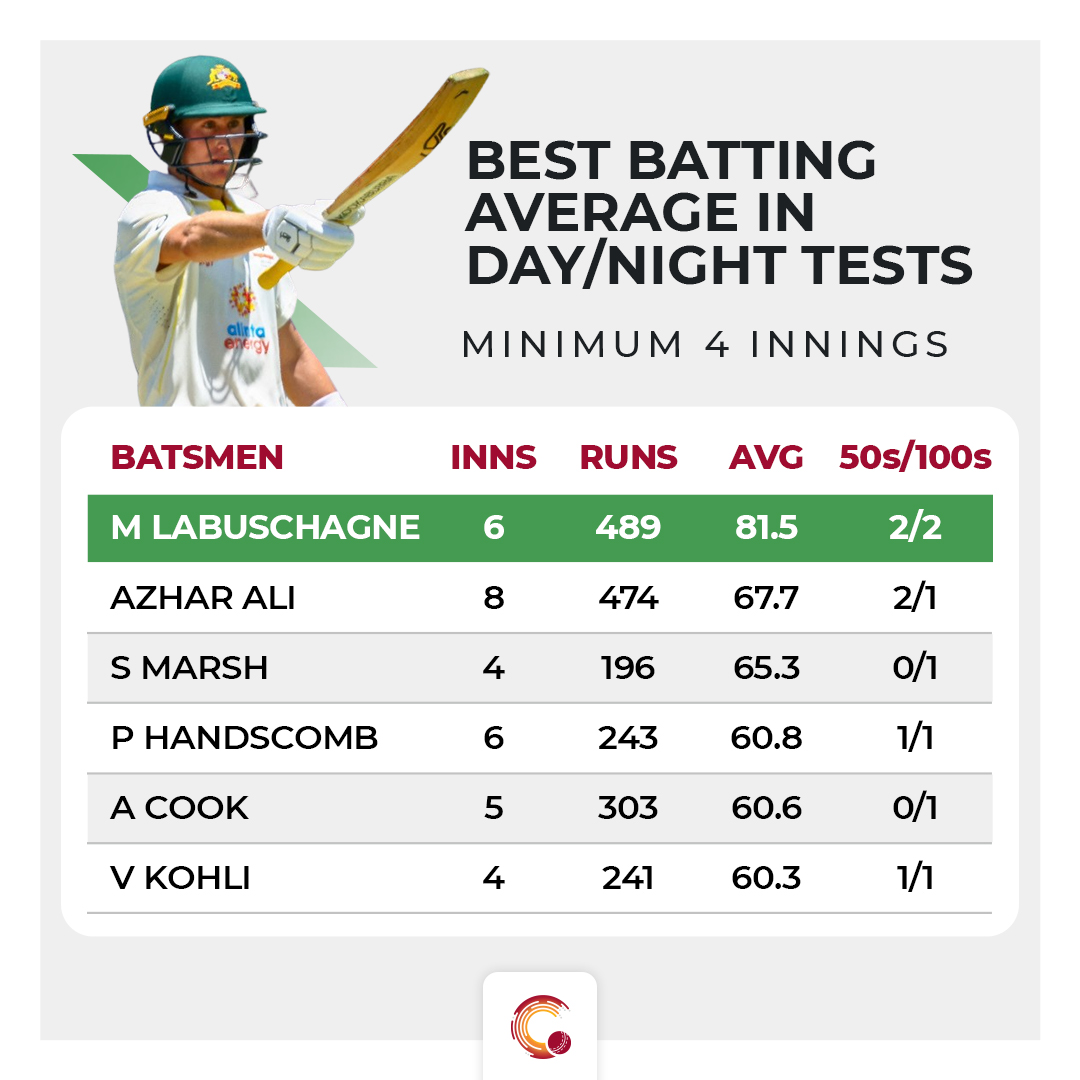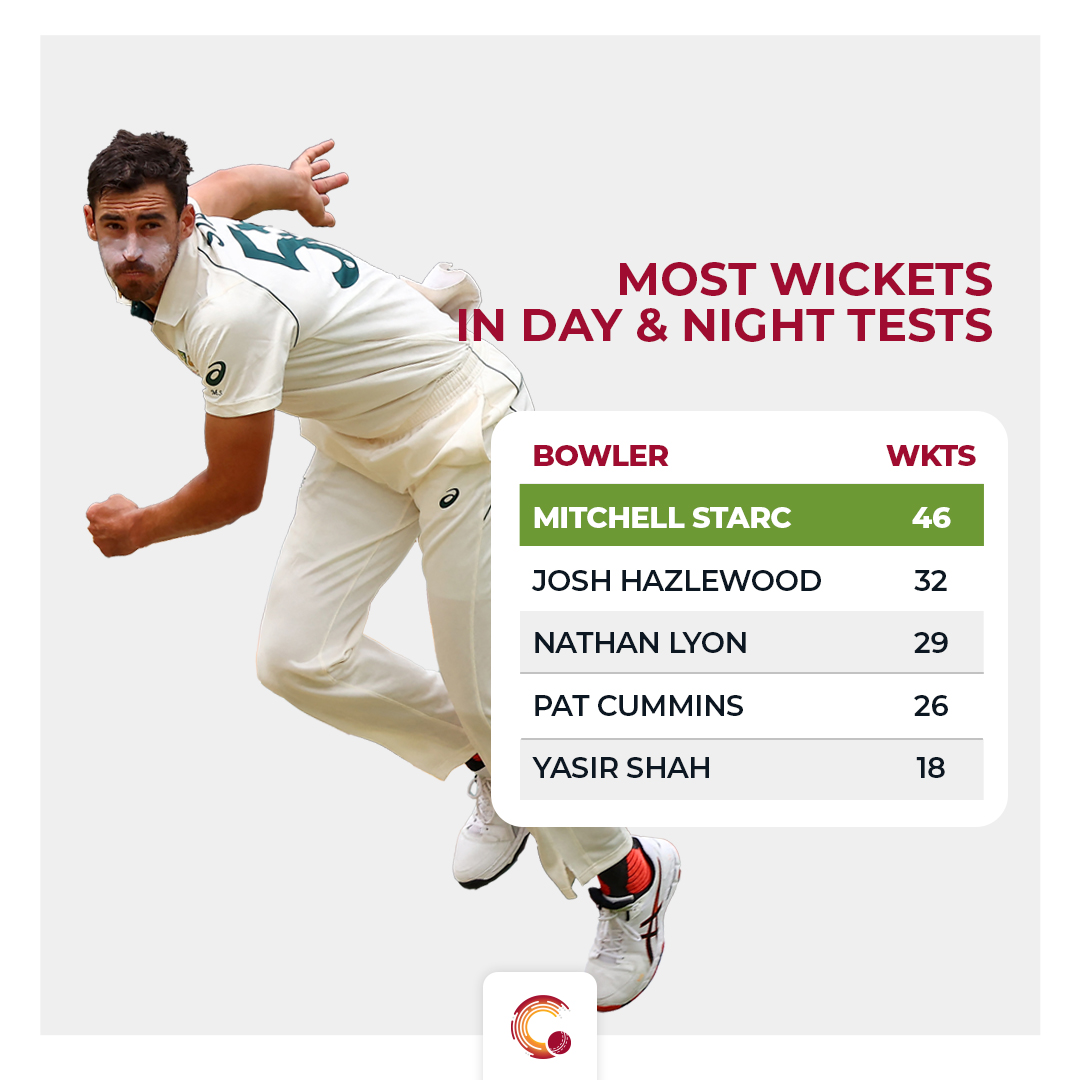 STATS PREVIEW
STATS PREVIEWAmidst all the controversies before the start of the series, the oldest rivalry in Tests kicked off on December seventh. After the loss to India at the Gabba, Australia hadn’t featured in a Test match for 322 days. The gap of international experience raised the expectation heading into the Ashes.
On another note, there was the doubt if the fortress they had built over Gabba that was breached in their previous Test (the match before the first Test) had created a psychological disadvantage. Well, clearly not. The ghosts of Gabba were brushed aside in the first innings itself when the Australian bowlers bundled out England for 147 and went on to pile a huge lead of 278. Let be with the ball or the bat, they stamped authority over a lethargic England outfit.
With high confidence from a win in their first Test and their impregnable record in day/night Tests, Australia are surely in-line for another victory. As for England, day/night Tests haven't been their stronghold. In four day/night Tests played, apart from their win against West Indies in their first ever day/night Test in 2017, England haven’t tasted success. To their worst, each of the other three defeats have been massive ones. Despite few injury concerns in the Australian camp, they certainly pose a threat to England, especially the second Test being a day/night one. Here are a few stats on how the day/night Test have panned out till now and as to why Australia is a threat to England in day/night Tests:
All day/night Tests have ended in results (no draw)
Till the 2000’s, the game of cricket had seen only two formats, Tests and ODIs. As the game evolved, the advent of T20 cricket and its entertainment was the new evolution. Though T-10 and the Hundred aren’t internationally recognized formats, they are one of a kind. In 2015, the oldest and the longest format of the game saw a new invention. Instead of the red ball, a pink ball featured for the first time and Tests were to be played under-lights. From the start in 2015 till now, 16 day/night Tests have been played and none of those has witnessed a draw.
Invincible Australia
Since the inception of day/night Tests in 2015, Australia have played eight matches, the most among all teams and they haven’t lost a single one of those. No other team has managed to achieve this feat. All their eight day/night Tests have been played in their backyard and Adelaide has hosted five out of those eight. The second Test will be the second day/night encounter in the Ashes. The first one was in 2017 where Australia trounced England with a 120-run margin win at the Adelaide Oval. Australia have played two day/night Tests against New Zealand and Pakistan, one against South Africa, Pakistan, England and India.

All-round Australia
Generally, the pink ball poses a threat to batsmen with a bit of extra movement off the pitch for the pacers, especially under lights. Despite these difficulties, Australia have been one of the best when it comes to batting. Their batsmen have averaged 35.6 in day/night Tests, the best among all teams. To back them, their bowlers have done an exceptional job as their bowlers have bagged a wicket every 21.5 runs. The difference of batting average to bowling average of 14.03 for Australia is highest for a team in day/night Tests, making Australia one of the best teams.

Labuschagne’s love for day/night Tests
The new sensation in the Australian batting line-up, Marnus Labuschagne has a career average of 61.2 in 19 Tests, already an astounding number. However, when playing in a day/night Test, he tends to exceed his limits. In six day/night innings, Labuschagne has averaged 81.5 with two centuries and two half-centuries. His six innings scores read: 6, 47, 50, 143, 162 & 81 (recent first). The only match he failed to register a 50+ score was against India in Adelaide. Among batsmen who have faced four-plus innings in a day/night Test, his average is the best.

In special matches, Stunning Starc steps up
Throughout his career, Mitchell Starc has a special ability to perform on bigger platforms. Even in ODIs his career numbers are sensational, but when it comes to World Cups, it is even more startling. His ODI career bowling averages 22.45 and he strikes every 26.1 balls. In World Cups, the numbers are over the roof as he picks up a wicket every 14.8 runs and 19.1 balls. It is the similar case in day/night Tests as well. Starc has picked up a wicket every 29.6 runs and 52.3 balls in day Tests but in day/night Tests, he has bagged 46 wickets in eight matches at a bowling average of 18.9 and strike rate of 36.0. His 46 wickets are the most for a bowler.

Australia’s contrasting batting record in first and second innings
Irrespective of their 100 percent win record in day/night Tests, Australia have a crevice in their batting. In the eight matches they have played till now, Australia have batted in the first innings four times and second in another four. In the four times they have batted first, their batsmen have averaged 58.8 and the team has posted an average total of 469. However, when they batted second, their batsmen average drops to 26.6. Hence, the average second innings score takes a hit and it dips to 280.
England bank on a miracle to topple Australia
A tactical blunder to choose to bat first or not? For an outside viewer, England in the first Test were mere push-overs. Catch drops, unnecessary overthrows, run-out chances missed and the worst of all, a wicket of a no-ball. These all looked like school level cricket mistakes. Deflated by a loss already, England step into the second Test with a poor record in day/night Tests. Barring their win against West Indies, England have suffered a 120-run margin defeat against Australia in 2017 in Adelaide, an innings and 49-run defeat against New Zealand in 2018 in Auckland and a 10-wicket loss against India in 2021 in Ahmedabad. In the six innings they batted in their losses, only once have they crossed 250+ total. Twice they have been bundled out within 100.